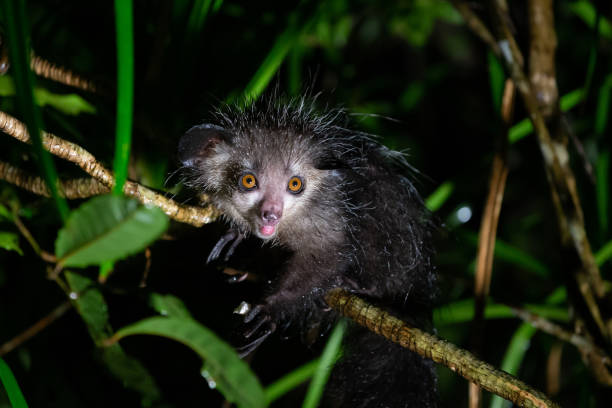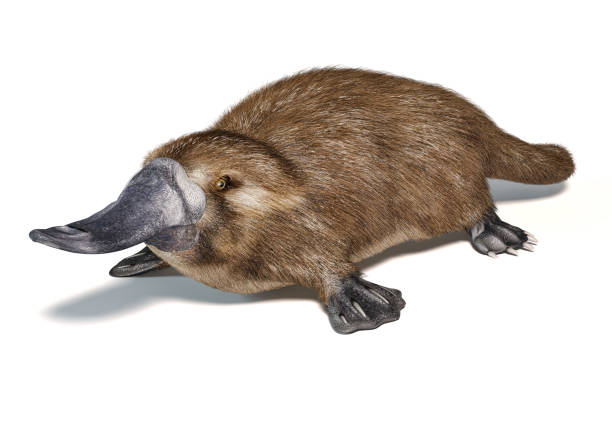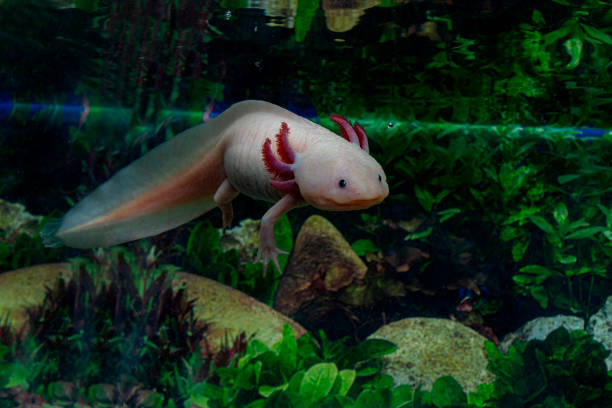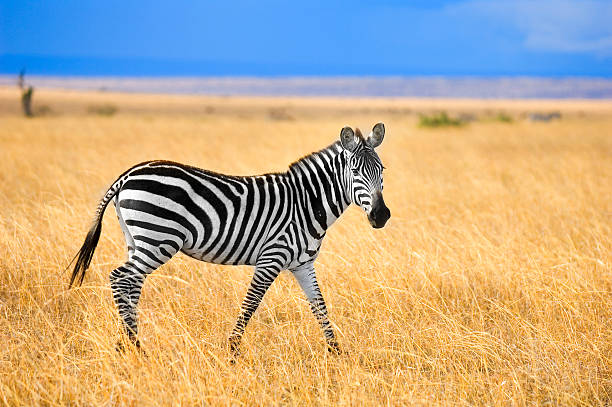When the sun sinks and the horizon glows with its last golden breath, the world we know begins to fade. Streets grow quiet, forests soften into whispers, and the skies turn into a velvet canvas of stars. Yet in this silence, another world awakens—a realm pulsing with life, mystery, and ancient rhythms.
The creatures of the night are not merely survivors of darkness; they are masters of it. Their senses sharpen where ours fail. They see without light, hunt without sound, and navigate through shadows as effortlessly as we walk under the sun.
These nocturnal beings often remain unseen by human eyes. Some glide silently through moonlit skies; others slink through the forest floor, unseen yet ever present. Their stories are woven into the heartbeat of the Earth itself, and to know them is to glimpse the unseen side of nature’s design.
Here are seventeen of the world’s most elusive nocturnal animals—those rare and mysterious beings who live their lives under the silver watch of the moon.
1. Aye-Aye – The Phantom of Madagascar
In the rainforests of Madagascar lives a creature that could have leapt straight out of a dream—or a nightmare. The aye-aye, a type of lemur, is one of the strangest and most misunderstood primates on Earth.
With large, gleaming eyes, bat-like ears, and an elongated, skeletal middle finger, it prowls the night in search of insects hiding beneath tree bark. Using its eerie finger, the aye-aye taps along branches, listening for hollow sounds that reveal insect tunnels. Then, with surgical precision, it pries open the wood and extracts its meal.
For centuries, local legends branded the aye-aye as a harbinger of bad luck, but science tells a different story: it’s a masterpiece of evolution. This nocturnal marvel’s keen hearing and specialized tools make it one of nature’s most efficient night foragers—a living reminder that even the strangest creatures have a perfect place in the ecosystem.
2. Slow Loris – The Gentle Assassin
Soft, wide-eyed, and deceptively adorable, the slow loris drifts through Southeast Asian jungles like a ghost of the trees. But beneath its innocent appearance lies a secret—this small primate carries venom.
The slow loris is the only known venomous primate. Glands near its elbows produce a toxin that it licks and mixes with its saliva, turning a bite into a weapon potent enough to deter predators. It moves silently through the canopy, hunting insects, small reptiles, and fruits by moonlight.
Their slow movements are not laziness—they’re camouflage. Predators spot motion more easily than stillness, so the slow loris’ deliberate grace is its shield. To see one in the wild is an extraordinary gift; to understand it is to witness evolution’s delicate balance between vulnerability and defense.
3. Pangolin – The Armored Dreamwalker
Armored in golden scales that shimmer faintly under the moon, the pangolin roams the African and Asian night like a living pinecone. Shy, solitary, and secretive, it is the world’s only mammal covered entirely in keratin scales.
When threatened, it curls into a tight ball, its armor forming an impenetrable fortress. But its true power lies in its tongue—a sticky, flexible appendage that can extend longer than its body to collect ants and termites deep within nests.
Sadly, this gentle creature is also the most trafficked mammal on Earth. Yet when left undisturbed, the pangolin is a silent gardener of the ecosystem, keeping insect populations in check. To encounter one is to meet a relic of ancient times—a quiet sentinel of the nocturnal world.
4. Kakapo – The Night Parrot of New Zealand
Imagine a parrot that doesn’t fly, emerges only at night, and smells faintly of moss. The kakapo, found only in New Zealand, is one of the world’s rarest and most remarkable birds.
It’s a ground-dwelling parrot with bright green plumage and a gentle, almost owl-like face. The kakapo’s nocturnal habits evolved in a land without mammalian predators—until humans arrived. Today, only around 200 remain, protected under intense conservation efforts.
At night, the kakapo becomes alive with personality—climbing trees with its beak and wings, booming low calls that echo across valleys during mating season. It is a bird of ancient lineage, a survivor of lost worlds, and a symbol of hope for species on the edge of extinction.
5. Fennec Fox – The Desert Whisperer
Under the vast Sahara night sky, where temperatures plunge and the sands shimmer with starlight, the fennec fox begins its nightly prowl.
With enormous ears nearly half the size of its head, this tiny fox hears everything—the flutter of an insect’s wings, the heartbeat of a hidden lizard beneath the sand. These oversized ears also dissipate heat, keeping it cool under the desert sun.
The fennec fox is playful, curious, and endlessly adaptable. Its nocturnal life is a masterpiece of desert survival: by day, it sleeps in cool burrows; by night, it hunts insects, small rodents, and fruit with quiet precision. Its silhouette against the dunes is a fleeting miracle of the wild—an emblem of grace in the harshest of worlds.
6. Barn Owl – The Silent Hunter
Few creatures embody the poetry of the night quite like the barn owl. With its heart-shaped face and ghostly white wings, it glides through darkness without a sound.
Barn owls hunt almost entirely by hearing. Their facial disc acts like a satellite dish, channeling sound directly to their asymmetric ears, allowing them to locate prey in complete darkness. Their flight feathers are specially adapted to muffle noise, granting them an almost supernatural silence.
To watch a barn owl hunt under the moonlight is to witness perfection—each dive a whisper of death, each movement as fluid as shadow. Across centuries, the barn owl has been a symbol of mystery and wisdom, a winged guardian of the twilight hours.
7. Tasmanian Devil – The Growling Ghost of the South
In the rugged wilderness of Tasmania, a fierce cry splits the night—the unmistakable screech of the Tasmanian devil. Though small, this nocturnal marsupial is a powerhouse of strength and determination.
Its jaws are the strongest relative to body size of any mammal, capable of crushing bones effortlessly. Under cover of darkness, it scavenges and hunts with relentless energy. Despite its fearsome name, the Tasmanian devil plays a vital ecological role as nature’s cleaner, devouring carrion and keeping disease at bay.
Their population suffered from a contagious facial tumor disease, but conservation efforts are slowly helping them rebound. To see one in the wild is to meet raw, untamed nature—a reminder that even in darkness, resilience roars.
8. Kinkajou – The Honey Bear of the Night
Hidden in the rainforests of Central and South America, the kinkajou swings gracefully through the treetops under the moon’s gentle glow.
With golden fur, large eyes, and a prehensile tail, this nocturnal mammal looks like a cross between a monkey and a bear, though it’s related to raccoons. It spends its nights foraging for fruit, nectar, and honey—hence its nickname, the “honey bear.”
Kinkajous are playful and curious, often using their long tongues to reach deep into flowers for sweet nectar. They play a vital role as pollinators in the rainforest ecosystem. When you hear rustling in the canopy at midnight, it might just be this golden wanderer on its silent, sugary mission.
9. Tarsier – The Moon-Eyed Acrobat
In the dense forests of Southeast Asia, the tarsier clings to branches like a shadow with enormous, luminous eyes reflecting the starlight. These tiny primates are among the most specialized nocturnal hunters in the world.
Each eye is larger than its brain and perfectly adapted for low-light vision. With a neck that can rotate nearly 180 degrees, the tarsier can scan its surroundings without moving its body. When prey is spotted—a cricket or small lizard—it leaps with astonishing speed and precision.
The tarsier’s haunting gaze captures the very essence of night—ancient, delicate, and endlessly alert. It is one of evolution’s most exquisite masterpieces of nocturnal design.
10. Kiwi – The Feathered Mystery of the Night
New Zealand’s national bird, the kiwi, is a marvel of nature’s imagination. Small, round, and flightless, it spends its nights foraging for worms and insects with its long, sensitive beak.
Unlike most birds, the kiwi’s nostrils are at the tip of its beak, allowing it to sniff out food underground. Its feathers resemble soft fur, and its sense of smell is among the most developed in the avian world.
Kiwis are shy and almost never seen in the wild. They live secret lives beneath the ferns, their quiet steps blending perfectly with the rhythm of the forest. In Māori culture, they are treasured as symbols of uniqueness and resilience—a living emblem of a land that still dreams in green.
11. Margay – The Jungle Acrobat
High in the rainforests of Central and South America, a small, spotted cat moves like a shadow through the canopy. This is the margay—a feline built for the trees and the darkness.
Unlike most cats, the margay can rotate its ankles 180 degrees, allowing it to climb headfirst down tree trunks and leap between branches with astonishing agility. It hunts birds, reptiles, and small mammals, all under the cloak of night.
The margay’s spotted coat blends perfectly with the dappled moonlight filtering through the leaves. Its large eyes gleam like liquid amber, capturing the faintest glimmers of movement. To spot one is to witness the jungle’s most secretive dancer—a creature of silence, grace, and mystery.
12. Luna Moth – The Ephemeral Spirit
Not all nocturnal beings roar or prowl. Some, like the Luna moth, simply flutter through the night like drifting dreams.
With its pale green wings and elegant tails, the Luna moth is among the most beautiful insects on Earth. Yet its beauty is fleeting—it lives as an adult for only about a week, its sole purpose to mate and begin the cycle anew.
It doesn’t eat during its adult life; its beauty is sustained entirely by what it gathered as a caterpillar. When a Luna moth lands near you, it feels like a visitation from another world—a whisper from the quiet, poetic side of nature.
13. Aardvark – The Earth’s Midnight Digger
Under the starlit skies of Africa, the aardvark emerges from its burrow to begin its nightly feast. With its long snout, sensitive ears, and powerful claws, it digs tirelessly through termite mounds, guided by an extraordinary sense of smell.
Despite its awkward appearance—something between a pig and a kangaroo—the aardvark is perfectly built for its nocturnal lifestyle. Its thick skin protects it from insect bites, and its sticky tongue can reach deep into tunnels to extract thousands of ants and termites in minutes.
The aardvark’s name means “earth pig” in Afrikaans, but it might just as well mean “earth spirit”—for it is one of the most elusive and ancient creatures of the African night.
14. Leopard Gecko – The Silent Desert Wanderer
In the moonlit deserts of Pakistan and India, tiny leopard geckos scurry among the rocks, their golden eyes gleaming with reflected starlight.
Unlike many reptiles, leopard geckos have movable eyelids and can blink, giving them an expressive, almost mammalian charm. They emerge after dusk to hunt insects and small invertebrates, using their excellent night vision to detect the slightest movements.
Their spotted skin provides perfect camouflage against sand and stone, making them nearly invisible to predators. Quiet, efficient, and endlessly patient, the leopard gecko thrives where few others can—an understated jewel of the night.
15. Sugar Glider – The Night’s Little Acrobat
In the forests of Australia, a tiny creature glides between trees, trailing whispers of moonlight. The sugar glider, a small marsupial, uses the folds of skin between its limbs to soar gracefully through the air.
Nocturnal by nature, it spends the night feeding on nectar, sap, and insects. It lives in close-knit colonies, communicating with soft chirps and glides that seem almost like play.
Their large, glowing eyes and boundless energy make sugar gliders some of the most endearing of nocturnal animals. They embody the joy and freedom of night—the quiet playfulness that the daylight world rarely witnesses.
16. Clouded Leopard – The Shadow of the Forest
Hidden deep in the rainforests of Southeast Asia, the clouded leopard prowls through mist and darkness. With its beautifully patterned coat and hauntingly silent movements, it is the ghost of the jungle.
This elusive big cat hunts monkeys, birds, and small deer, often leaping from tree to tree in pursuit. Its long canine teeth, proportionally the largest of any cat species, evoke images of ancient saber-toothed cats.
Because it is so secretive, even researchers rarely see it in the wild. The clouded leopard represents the wild at its most mysterious—a reminder that nature still keeps secrets we’ve yet to uncover.
17. Nightjar – The Voice of the Dusk
As dusk settles and the last light fades, a strange, haunting sound fills the air—the call of the nightjar.
This cryptic bird, found on nearly every continent, blends perfectly with the ground during the day, its mottled feathers resembling leaves and bark. At night, it takes to the air, catching insects in wide, gaping jaws as it glides effortlessly under the stars.
Its call—part song, part echo—has inspired folklore for centuries. Some say it steals dreams; others, that it guards them. The nightjar is a bird of transitions, thriving in the thin line between day and night, seen by few but felt by many.
The Symphony of Shadows
The world at night is not silent—it hums with the rhythm of wings, paws, and whispers. These seventeen nocturnal animals remind us that darkness is not emptiness but abundance, filled with beings who have mastered the art of unseen living.
While we sleep, they hunt, sing, dance, and nurture. Their world is one of cool winds, silver light, and ancient instincts. And though we rarely see them, they are all around us, keeping the world balanced in its endless dance of day and night.
To understand them is to see beyond fear and into wonder. For in the realm of night, beauty glows not from light—but from life itself.






